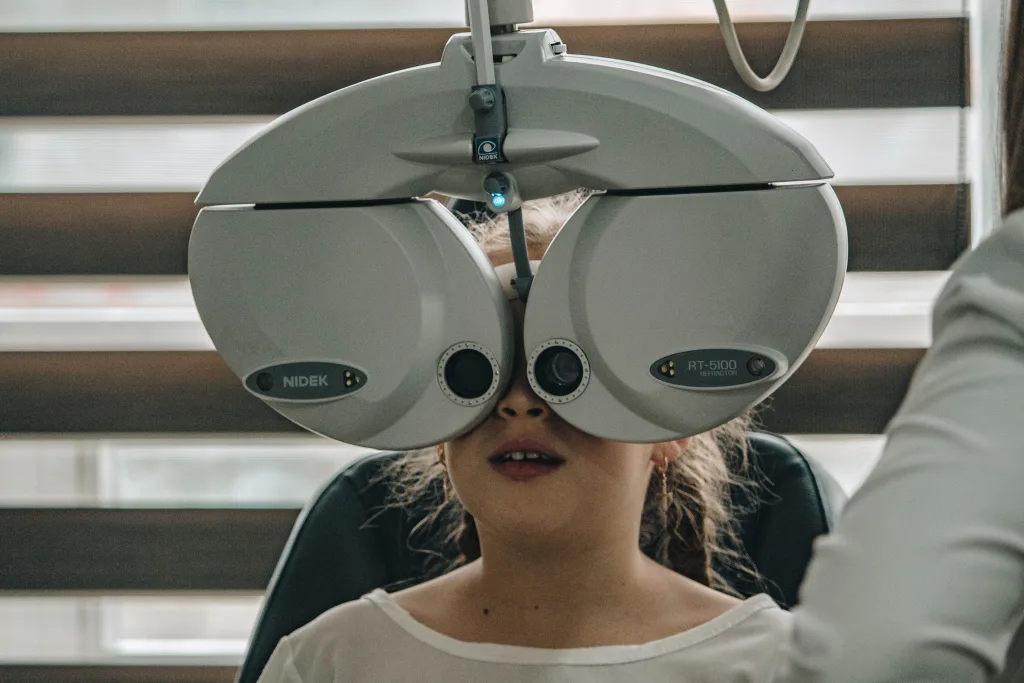The world of medicine is filled with complex terminologies and abbreviations that can be confusing to those of us who are not experts in the field. One such abbreviation that you may come across when getting an eyeglass prescription is “OD” and “OS”. But fear not, because I am here to shed some light on thse mysterious terms.
Let’s start with “OD”. This abbreviation stands for “Oculus Dexter”, which is Latin for the right eye. So, when you see “OD” on your prescription, it means that the measurements and corrections specified are meant for your right eye. It’s like a little code that doctors use to communicate with each other and make sure that the correct information is being conveyed.
On the other hand, or should I say, on the other eye, we have “OS”. This abbreviation stands for “Oculus Sinister”, which is Latin for the left eye. So, when you see “OS” on your prescription, it means that the measurements and corrections specified are meant for your left eye. It’s like a secret language that only doctors and optometrists understand, but now you’re in on the secret too!
But what happens if you see “OU” on your prescription? Well, my friend, that’s when things get really interesting. “OU” stands for “Oculi Uterque”, which means both eyes in Latin. When your prescription includes “OU”, it means that the measurements and corrections specified are meant for both of your eyes. It’s like a double whammy of optical goodness!
Now that we’ve deciphered the mysterious abbreviations, let’s delve a little deeper into the other terms you might come across on your prescription. We have “SPH”, which stands for sphere. This term refers to the strength of the lens needed to correct your vision. A positive number indicates farsightedness, while a negative number indicates nearsightedness.
Next up, we have “Cyl” which stands for cylinder. This term is used to correct astigmatism, which is a common condition that causes blurry vision. The cylinder value indicates the amount of astigmatism present in your eyes.
You might also see “Pl” on your prescription, which stands for plano. This simply means that there is no correction needed for that particular aspect of your vision.
And finally, we have “D” which stands for diopter. This is a unit of measurement used to quantify the refractive power of lenses. It’s like the language of lenses, telling us how strong or weak they need to be to give you the best vision possible.
But what about the “Axis”? Well, this term provides information on the orientation of the cylinder power. It’s like a compass for your eyeglasses, guiding them in the right direction to correct your astigmatism.
So, there you have it, a detailed guide to understanding those cryptic abbreviations on your glasses prescription. Now, armed with this knowledge, you can confidently walk into your optometrist’s office and decode the language of eyewear. Remember, knowledge is power, especially when it comes to taking care of your precious peepers.
Does OU Mean Both Eyes?
When it comes to eyeglass prescriptions, the abbreviation “OU” indeed stands for “Oculus Uterque,” which is Latin for both eyes. So, when your eye doctor writes “OU” on your prescription, they mean that the prescribed correction is suitable for both your right and left eyes. It’s a handy way for doctors to make sure the prescription is clear and understandable. So, next time you see “OU” on your prescription, you’ll know that it’s referring to both of your precious peepers! And hey, don’t forget to take good care of those eyes – they’re pretty amazing!

What Are The Abbreviations For Eyes?
The abbreviations for eyes on a glasses prescription are as follows:
– OD: This stands for Oculus Dexter, which is Latin for “right eye.”
– OS: This stands for Oculus Sinister, which is Latin for “left eye.”
– OU: This stands for Oculus Uterque, which means “both eyes.”
These abbreviations help to specify which eye the prescription is referring to, allowing for accurate vision correction. For example, if you see “OD -1.50” on your prescription, it means that the correction is for your right eye. Similarly, “OS -2.00” would indicate that the correction is for your left eye. And if you see “OU -1.75,” it means that the correction applies to both of your eyes.
It’s important to understand tese abbreviations when reading your glasses prescription, as they help ensure that the correct prescription is applied to the appropriate eye.
Does OD Mean Right Eye?
OD is an abbreviation for Oculus Dexter, which is Latin for the right eye. When it comes to eyeglass prescriptions, OD refers specifically to the prescription for your right eye. It’s like a special code that eye doctors use to keep track of which prescription is meant for which eye. So, if you ever see “OD” on your prescription, you’ll know it’s all about that right eye of yours!
In case you’re wondering, the left eye is referred to as Oculus Sinister (OS), and the prescription for that eye is usually indicaed with OS on the eyeglass prescription. Just a fun fact to keep in mind!
Conclusion
The medical abbreviations for both eyes, OD and OS, derive from Latin terms that refer to the right eye and left eye, respectively. These abbreviations are commonly used by doctors when prescribing eyeglasses or discussing eye conditions. Additionally, the abbreviation OU stands for both eyes, indicating that a prescription or diagnosis applies to both the right and left eyes. It is important to understand these abbreviations when reading a glasses prescription or discussing eye health with medical professionals. So, next time you visit your eye doctor, you will have a beter understanding of what these abbreviations mean and how they relate to your eye health.
